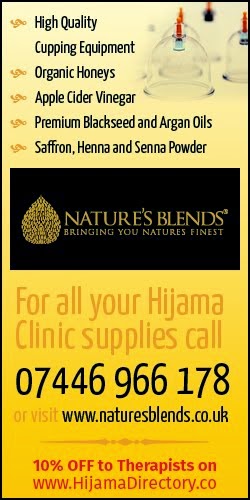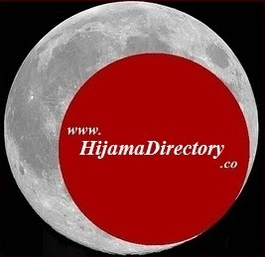The following is a an announcement by Dr Amal from The Optimum Cure & Care in Leicester, about their CMA approved upgraded Hijama course.
Course Specification
Unlike conventional schools, colleges or universities, there are no terms, semesters, or specified intake dates for the Al hijama distance courses. Students can enrol on any day and at any time of the year. Distance learning allows our students to plan their studies to fit in with their lifestyle or work commitments.
Please note that this is only an approximate figure and is dependent upon how much time you can dedicate to your studies at the end of each module there is an assignment which needs to be completed and returned to your personal tutor at the end of each module.
| Title of learning programme | Al-Hijama |
| Duration of learning programme | 15 weeks |
| Total number of learning hours per programme | 150 Hours including the study hours |
| Certification Authority | Complementary Medical Association (CMA) |
Please note that this is only an approximate figure and is dependent upon how much time you can dedicate to your studies at the end of each module there is an assignment which needs to be completed and returned to your personal tutor at the end of each module.
Course Description
This course will be conducted based on a combination of Islamic teachings and the modern cupping tools. The course is an ideal foundation to introduce you to the development and practice of Al Hijama.The course is suitable for beginners as well as experts. It is carefully structured so each module builds on the previous one, allowing students to develop their confidence and skills, and reach their full potential to perform Al Hijama. It provides the basic level of knowledge designed for students interested to perform home cupping. Students will learn Al Hijama, a safe, simple, and effective therapy for prevention and treatment of some conditions and diseases.Course Objectives
- To learn basic knowledge (theory and practical) of Al Hijama mainly dry and wet based on a combination of Islamic teachings and the modern cupping.
- To understand the requirement and obligations of practicing Al-Hijama (cupping) as a mean of natural therapy.
- To communicate with other practitioners when needed.
- To be able work both independently and as a team member.
- To act professionally and keep the patient’s personal information confidential, except when referring to other health-care therapists.
Course general policy and rules
- Read assigned material.
- Internet search for a recent papers.
- Assignments submitting before the dead line.
- The rule of marking the assignments is; either to pass or fail the assignment.
- There are no marking grades.
- The requested number of words should be provided with a range of 50 words less or more in your assignment.
- In order to pass the assignment, you need to fulfil the criteria of pass rules.
Course Modules
| # | Module Topics | Learning Objectives |
|---|---|---|
| Module 1 |
| On successful completion of this module the candidate will be able to:
|
| Module 2 |
| On successful completion of this module the candidate will be able to:
|
| Module 3 |
| On successful completion of this module the candidate will be able to:
|
| Module 4 |
| On successful completion of this module the candidate will be able to:
|
| Module 5 |
| On successful completion of this module the candidate will be able to:
|
| Module 6 |
| On successful completion of this module the candidate will be able to:
|
| Module 7 |
| On successful completion of this module the candidate will be able to:
|
Fees
£475 (including certificate fee)Tutor Support
With this course you will be offered professional guidance and advice when you need it. You will have unlimited access to your own personal tutor who specialises in the field of study. We are keen to ensure that you receive constructive feedback and to deal with any queries you may have. You are more than welcome to telephone or email your personal tutor.Assessment Method
After each module, there is an assignment which needs to be completed and submitted to your personal tutor for marking. This method of continual assessment ensures that you are provided with assistance throughout the duration of the course and your personal tutor can consistently monitor your progress.Study Options
In order to offer our students the most convenient and flexible distance learning courses, The Optimum Cure offers you the option to study for your course through on-line method; students will be given a password and user name to access the study materials.Further Information
If you would like any further information regarding this course, please call an advisor (0044) 01162107387, mobile (0044) 07880741045 or email info@theoptimumcure.comFEATURED ORGANISATION:
LOCATION
Leicester
England
CONTACT DETAILS:
Tel: (0044) 07880741045, (0044) 01162107387
Email: info@theoptimumcure.com or hijama@theoptimumcure.com
Website: www.theoptimumcure.com
Information from the CMA website: http://www.the-cma.org.uk/Colleges/The-Optimum-Cure-Care-502/
_________________________________________________
Our thanks to Dr Amal from The Optimum Cure & Care from Leicester England for sharing the above post. If you have any questions or want to leave some feedback on their course, then please do so via a comment* below.
If you are a hijama therapist or patient and are happy to share your knowledge or experience via a guest blog-post like the one above, please send me an email to: hijama.mail@gmail.com.
*Comments are moderated to prevent spamming so may take some time to appear
---------------------------------------------








